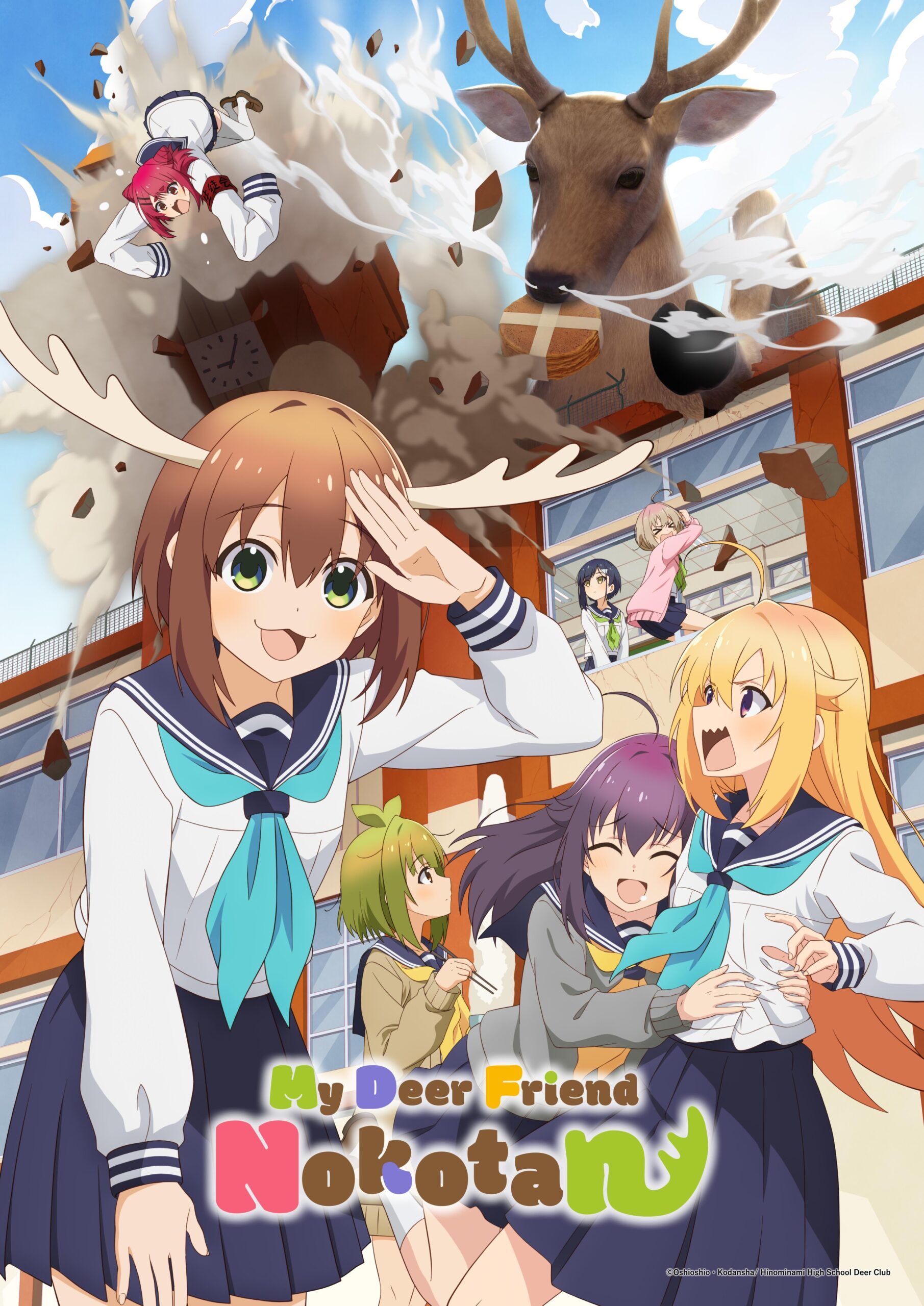
Around this time the anime version of the manga comes to an end Shikanoko Nokonoko Koshitantan (translated into Spanish as My friend Nokotan is a deer), creation of the mysterious mangaka Oshioshio. It is difficult to find a simile in recent times for the commotion caused by this work that with only twelve episodes in its first season has attracted the attention even of audiences not specialized in manganime, or even absolute neophytes who have appreciated, for better and for worse. , absurd humor and stories random that structure (in their own way) the argument.
The story is the following, more or less: Torako Koshi is a high school student who hides a dark past as district (or juvenile delinquent), something that if discovered would destroy her reputation as a model student and her life in general according to the strict Japanese social organization. One morning, on his way to school, he comes across the unusual scene of another young woman dressed in a school uniform hanging from some electrical cables. He soon realizes what is holding her together: the girl is endowed with antlers, like those of male deer. After rescuing her, he runs to the school where he soon discovers that the deer-girl is a recently transferred student who introduces herself as Noko Shikanoko and who, to top it all off, will sit next to Torako in her classroom. From here begins a series of adventures in which Noko will drag her new friend who, fearful because the young deer, for unknown reasons, knows about her secret, becomes an accomplice in a series of events as meaningless as they are inexplicable from the beginning. conventional logic.
Don’t get me wrong: this is not a typical comedy even by the standards of Japanese humor in the sense that it can contain (it does) large amounts of references that do not leave the archipelago and are therefore unintelligible in any dubbed version. , but the very structure of the story is supported by quick anecdotes that have no connection with each other throughout the dozen chapters of the series. What we witness here is the demonstration of a humor that is unleashed from the link between the absurdity of crazy situations with aesthetics. kawaii of characters and situations, pendulating between a surrealism typical of comic animation towards what we could define as a post-Modern Dadaism (and kawaii also) that makes fun of its own cultural references as well as the manganime field itself, something that many fans have not taken well at all.
It is striking to find the comments that some viewers place in mind and her friend’s past. This can be seen as a comment on the current sensitivity around comedy’s approach to sensitive topics and around the moral idea that current consumers (at least several segments) have about what can be included between jokes and teases leaked by the writers into the plot.
Another example is how much the doe, along with the entire atmosphere of the anime, laughs at the efforts, as commendable as those of any dedicated student, that Torako dedicates to being a model and proud student which, beyond the fact that That is motivated by the need to hide their criminal past, is what is traditionally expected of hard-working Japanese students, much more so of a school council president (seito kaichō) who has to be an example for all his colleagues. And this is precisely another of the points where complaints have been raised by Japanese users who denounce the absurdity of a story that, they affirm, is only sustained by random humor and scenes that, juxtaposed without any interest in connecting them to each other , demonstrate from the first chapter to the last that the Aristotelian structure has gone on sabbatical (after all, isn’t that one of the great inheritances of the literary paradigms of the last century?) and all that remains is to let oneself be carried away by the armed symbolic flow with your favorite ramen, some Pockys, an ice-cold Kirin beer or at least a few Ramunes, for example.
The work of putting together a Deer Club (Shika-bu) of after-school activities, a trivia where embarrassing details of Koshi’s privacy are aired, a girl who cannot stop eating the rice she herself harvests, the disappearances/transformations of Shikanoko turned into a deer (at least since the visions of Koshi), the project to participate in a deer contest in the style of the Tokyo Idol Festival, the club’s crazy performance at the school sports meeting, Shikanoko’s persecution at the hands of a hunter originally from Hokkaido and even the revelation of Shikanoko as a Deer Goddess in a Shinto temple for the new year.
This anime is a success story of viralization on social networks after at the end of last May the marketing team designed a strategy in which they released the catchy musical theme of the series (Shikairo days) in a YouTube video that includes the scene where Koshi Torako sings and dances in front of a deer. With a duration of one hour of looped repetitions (there is even a version of ten hours in a row), the video caused a sensation on TikTok for being considered an out-of-context meme whose fun lay precisely in that characteristic.
As a culmination, it only remains to say that everything we can say about Shikanoko and her gang is an invitation to believe it for ourselves. An anime made by Japanese with Japanese humor (sounds logical, doesn’t it?) so that the rest of us can admire our own absurdity in the era of the cruelest postmodernity but at the same time humorous and chatty like this anime and life itself.
Mario Bogarín is a Mexican writer, sociologist, researcher and university professor specialized in studies on the aesthetic theory of postmodern art and contemporary Japanese popular cultures.
Source: https://reporteasia.com/anime/2024/09/27/shikanoko-club-ciervos-absurdo-delicioso/

